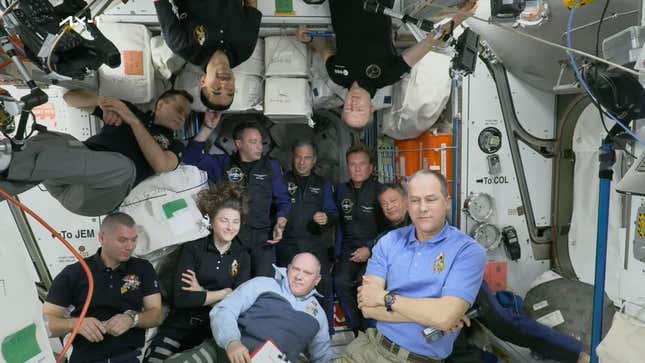
As more private astronauts venture out into space, NASA is seeking to better regulate their journeys to Earth orbit. The space agency recently announced some updates to the set of rules required for upcoming private astronaut missions, including the stipulation that all future missions be led by a former NASA astronaut.
NASA released the list of updated rules on Monday, which will be documented as part of the Private Astronaut Mission Authorization, Coordination, and Execution (PACE) Annex 1. The updates are “lessons learned” from the first private astronaut mission to the ISS, in which Axiom space sent four astronauts to the ISS in April. Axiom Mission 1 (Ax-1) was led by former NASA astronaut Michael López-Alegría, but the new requirements now call for all future missions to be led by a former NASA astronaut. For these missions, the NASA astronaut will serve as the mission commander and provide guidance “during pre-flight preparation through mission execution.”
Axiom Space was planning on sending future missions without a NASA astronaut and have four paying customers instead of three, according to SpaceNews. It’s not yet clear how the new rules will affect the private space company’s original plan to launch private missions without a NASA astronaut in command.
The crew of the Ax-1 mission was tasked with a number of research experiments aboard the ISS, including an EEG-enabled space helmet and the first two-way Holoportation experiment to be performed in space. The Ax-1 crew was made up of three wealthy investors and entrepreneurs, Larry Connor, Eytan Stibbe, and Mark Pathy, who had never been to space before. After landing back on Earth, the crew members admitted that they were overwhelmed by the amount of work they had to do on the ISS, saying that they had too much to fit into their tight schedule.
The Axiom crew’s presence on board the ISS also placed pressure onto the existing crew’s schedule. “In essence, the arrival of the Axiom personnel seemed to have a larger-than-expected impact on the daily workload on the professional International Space Station crew,” said Susan Helms, a former NASA astronaut and member of the Aerospace Safety Advisory Panel, during a panel meeting in May.
The updated requirements now state that private missions must submit their research requests at least 12 months prior to the expected launch date in order to review their “feasibility and implementation standpoint.” NASA will also be requiring additional time for microgravity training for the astronauts ahead of their launch to better adapt to the spaceflight environment. Following Ax-1, the private crew admittedly had a hard time adjusting to the microgravity environment. “We got up there and, boy, we were overwhelmed,” López-Alegría said at a press conference after the mission. “Getting used to zero gravity is not an overnight thing.”
The new rules also require an outreach plan specific to the private missions in order to provide information to the public during training, pre-launch, in-orbit activities, and return to Earth activities.
NASA and Axiom Space are gearing up for the second private mission to the ISS. Ax-2 will be commanded by former NASA astronaut Peggy Whitson and is scheduled to launch sometime next spring.
More: Billionaires Sent to Space Weren’t Expecting to Work So Hard on the ISS